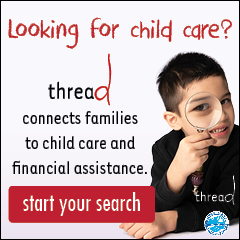Understanding Postpartum Depression
By Amy Newman

A placental abruption when she was 37 1/2 weeks pregnant meant an immediate change in Carson Hupe’s birth plan. Instead of the midwife-assisted home birth she’d wanted for the birth of her first child, Carson had an emergency Caesarean section under general anesthesia at Providence Alaska Medical Center. The inability to have the birth she’d planned for was traumatic, she says, even though her daughter was born healthy.
RESOURCES AND SUPPORT
If you believe you or someone you love is suffering from a perinatal mood disorder, which can include postpartum depression or postpartum anxiety, don’t be afraid to reach out for help.
“Perinatal mood disorders are a true illness,” says Jen Erickson, midwife birth assistant at Geneva Woods Birth Center and volunteer coordinator with Postpartum Support International (PSI). “But it can be 100 percent treatable.” Below is a list of local, statewide and national resources.
National Postpartum Depression Hotline: 1-800-PPD-MOMS
Alaska Postpartum Depression Support: Anchorage — Monday Mama’s Support group. Postpartum Support Alaska meets at the Maternity Education Center at the Children’s Hospital at Providence. Contact the Family Support Counseling Clinic at 907-212-4940 or email Joclyn Reilly, Family Support Services counselor, at familysupportcounseling
@providence.org
Fairbanks – Alaska Family Health & Birth Center Support Group. Contact 907-456-3719 to register.
Postpartum Support International. A national organization with state chapters, the Alaska PSI page lists state coordinators in addition to local support groups, emergency resources and local https://psichapters.com/ak/
National Suicide Prevention Lifeline. 1-800-273-TALK (8255)
Suicide Prevention Hotline:
1-800-SUICIDE
Alaska Careline. 1-877-266-HELP (or text 4help to 839863)
After delivery, Carson chalked up the sadness and increasing frustration she felt trying to meet her daughter’s basic needs to a combination of baby blues and first-time mom jitters. But when she tried to return to work four-weeks postpartum, Carson panicked.
“I got depressed at the thought of leaving her and really felt just awful. I had to take more time off from work and I didn’t have any leave, so I felt like I was failing everybody,” she recalls. “I just kind of tanked after that.”
Carson isn’t alone. According to the National Institute of Mental Health, one in seven women experiences some form of postpartum depression, with symptoms appearing anywhere from one week to one year after birth.
In Alaska, those numbers are even higher.
“One in four women experience depression or an anxiety disorder after pregnancy in Alaska,” says Vanessa Perry, LPC, owner of Hope Mends Counseling in Kenai and the Southcentral Alaska resource coordinator for Postpartum Support International (PSI).
Postpartum depression is a form of perinatal mood or anxiety disorder (PMAD), an umbrella term that encompasses postpartum depression, postpartum anxiety, and perinatal OCD, says Joclyn Reilly, LCSW, PMH-C with Providence Alaska Medical Center and the Alaska coordinator for PSI. About 50 percent of disorders begin during pregnancy, she adds.
With the appropriate interventions, however, PMADs are treatable.
More than the baby blues
A case of the “baby blues” – feelings of worry, unhappiness or fatigue – immediately following delivery is normal, Vanessa says. What makes postpartum depression or anxiety different is the severity, timing and duration of those feelings.
“Baby blues is the leveling out of the insane amounts of hormones women get when they’re pregnant,” she explains. “That tends to take about one to two weeks. Anytime after three weeks is when we want to start getting mom in for intervention and support.”
Moms who experience PMAD can have unwanted, persistent or intrusive thoughts (perinatal anxiety), or feel unlike themselves or have trouble bonding with baby (postpartum depression), Joclyn says. Postpartum anxiety manifests as “mama bear instincts” on overdrive. For example, worries about dropping baby while walking up or down stairs, accidental drowning during bath time, or death from SIDS. Those fears are normal, Joclyn says. It’s any changes in behavior because of those fears that are not.
“Every new parent has those thoughts,” she explains. “But if you’re able to talk yourself out of it and you’re not changing your behavior because of it – you’re not constantly checking the baby all night because of that fear of SIDS – then it’s not a problem.”
From the depression side, women may feel sad, overwhelmed, tearful, angry, irritable and even filled with rage, says Jen Erickson, midwife birth assistant at Geneva Woods Birth Center and PSI volunteer coordinator. Moms may also experience changes in appetite or sleep patterns or lack emotion, she adds.
Causes and risk factors
There’s no one single cause for perinatal mood disorders, with physiological, biological and environmental factors all playing a role, Jen says.
Hormonal shifts during and after pregnancy are a big contributing factor, particularly if mom has a history of sensitivity to those changes, Joclyn adds.
A personal or family history of mood disorders (Carson was diagnosed with generalized depression when she was younger) increases a woman’s risk, Vanessa says, as does lack of a support system, common with Alaska’s large population of transient families. Sleep deprivation can also exacerbate symptoms.
Other risk factors include a difficult or traumatic birth, whether that means time spent in the neonatal intensive care unit or, like Carson, a birth that didn’t go according to plan, or prior trauma, such as domestic violence or sexual assault, Joclyn adds.
PMAD can affect any mom, at any time. “Every pregnancy is different, and every postpartum experience is different,” Joclyn says. “I’ve certainly seen moms where they never had any issues with the first two kids, then the third kid, the anxiety just came out of nowhere.”
Treatment
Although some moms may be tempted to “power through” rather than seek help, the wait-and-see approach isn’t recommended.
“If you go untreated, it’s just like any other form of depression,” Jen says. “Maybe the symptoms lessen, but if you don’t seek treatment it doesn’t necessarily go away. That irritability, that sadness, that anger, that anxiety, or rage may stay.”
Seeking support from family and friends or joining a mom’s group can help, Vanessa says, as can having someone babysit for a few hours so mom can nap or get out of the house.
Individual or group therapy – or teletherapy for moms who live in rural areas – with someone trained in perinatal mood disorders is also helpful, Jen says. PSI offers online support groups, a closed Facebook group, and weekly telephonic support groups for moms, she adds. Medication is also an option for women who find that therapy isn’t enough.
Individual therapy has helped, Carson says, though “I still kind of experience it. There are definitely days when I feel more tired than usual and just want to do nothing all day.”
But she adds that it’s important for moms to be honest with postpartum providers to ensure they get the help they need.
“I think sometimes people feel ashamed that they have postpartum depression,” she says. “It really can happen to anybody. You need to take care of yourself or you can’t take care of your baby.”










